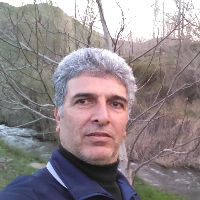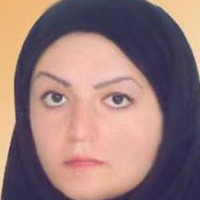An Analysis on the Function and Nature of the Tokens and Clay Figurines from Tappe Qeshlaq of Talvar During the Chalcolithic Period
Author(s):
Abstract:
The salvage excavation at Tappe Qeshlaq Chel-Amiran lead to identify a site attributed to the Chalcolithic period in the highland between the east of Central Zagros and the southern Lake Urmiah basin. Although a cultural relationship between two areas was already proved، but available information intermediate about the areas was not too much. Tappe Qeshlaq is a site located in the middle of a valley with the same name as a natural corridor indicating the cultural interactions of the given regions during the Chalcolithic period. This site، in which over 12 meters of deposit from different phases of the Chalcolithic period was identified، is includes five cultural periods and shows a non-stop 2000-year-long existence according the Dalma culture indexes in the lowest deposit and the works of Godin VI/VII type in the highest deposit until the end of the Chalcolithic in central Zagros. During the Chalcolithic period numerous finds such as sphere، cone، disc، oval، hyperbola and other unique geometric shapes were found most of which have half-baked due to burning among the rubbish، and that may be the reason why they have lasted for such a long time. Other archeological data show that the economy was dependent mostly upon farming، hunting wild animals and catching the aquatics rather than agriculture. Of the various reasons one could mention is the special environmental condition، fairly cold and dry steppe climate and the low soil fertility. It seems that some of the needed things were imported from the neighboring areas through exchange while most of the finds proving trade and exchange، although stamp seals with geometric figures show a regional function of the site. Of the hunted animals، wild donkey and gazelle are more frequent then rabbit، turtle، fish and birds are the most frequent hunted animals. The abundance of animal clay figurines، although incomplete and broken، is another characteristic of the site during the Chalcolithic period، as compared to the several similar samples from sites like Tepe Sarab، Tepe Ghabristan، etc. implies farming and the relevant rituals. In this ritual، which seems to have been held repeatedly، clay figurines were made in an abstract form and thrown away in a special ceremony while they were broken. The clay figurines are in complete conformity with the animals bones discovered from the site.
Keywords:
Language:
Persian
Published:
Iranian Archaeological Research Journal, Volume:4 Issue: 7, 2015
Pages:
27 to 46
magiran.com/p1371269
دانلود و مطالعه متن این مقاله با یکی از روشهای زیر امکان پذیر است:
اشتراک شخصی
با عضویت و پرداخت آنلاین حق اشتراک یکساله به مبلغ 1,390,000ريال میتوانید 70 عنوان مطلب دانلود کنید!
اشتراک سازمانی
به کتابخانه دانشگاه یا محل کار خود پیشنهاد کنید تا اشتراک سازمانی این پایگاه را برای دسترسی نامحدود همه کاربران به متن مطالب تهیه نمایند!
توجه!
- حق عضویت دریافتی صرف حمایت از نشریات عضو و نگهداری، تکمیل و توسعه مگیران میشود.
- پرداخت حق اشتراک و دانلود مقالات اجازه بازنشر آن در سایر رسانههای چاپی و دیجیتال را به کاربر نمیدهد.
In order to view content subscription is required
Personal subscription
Subscribe magiran.com for 70 € euros via PayPal and download 70 articles during a year.
Organization subscription
Please contact us to subscribe your university or library for unlimited access!




